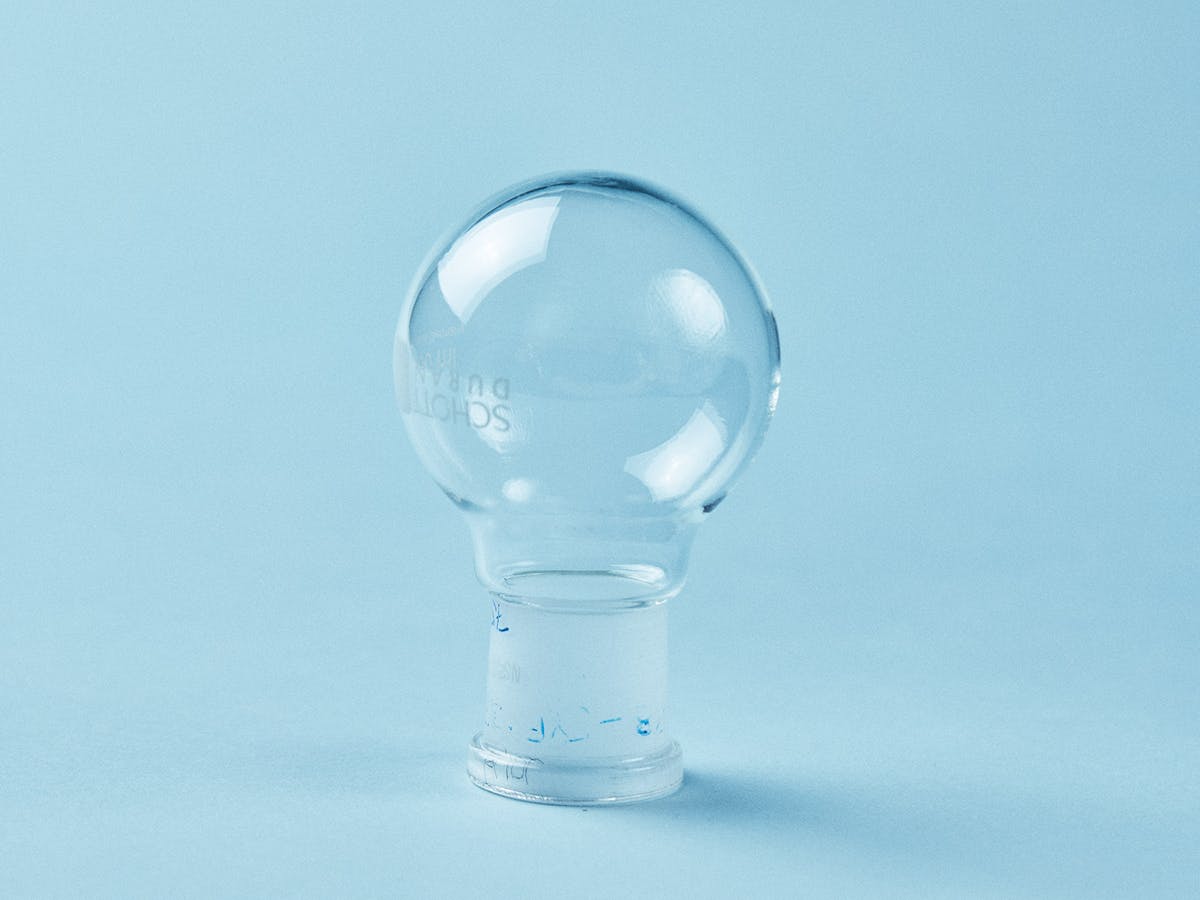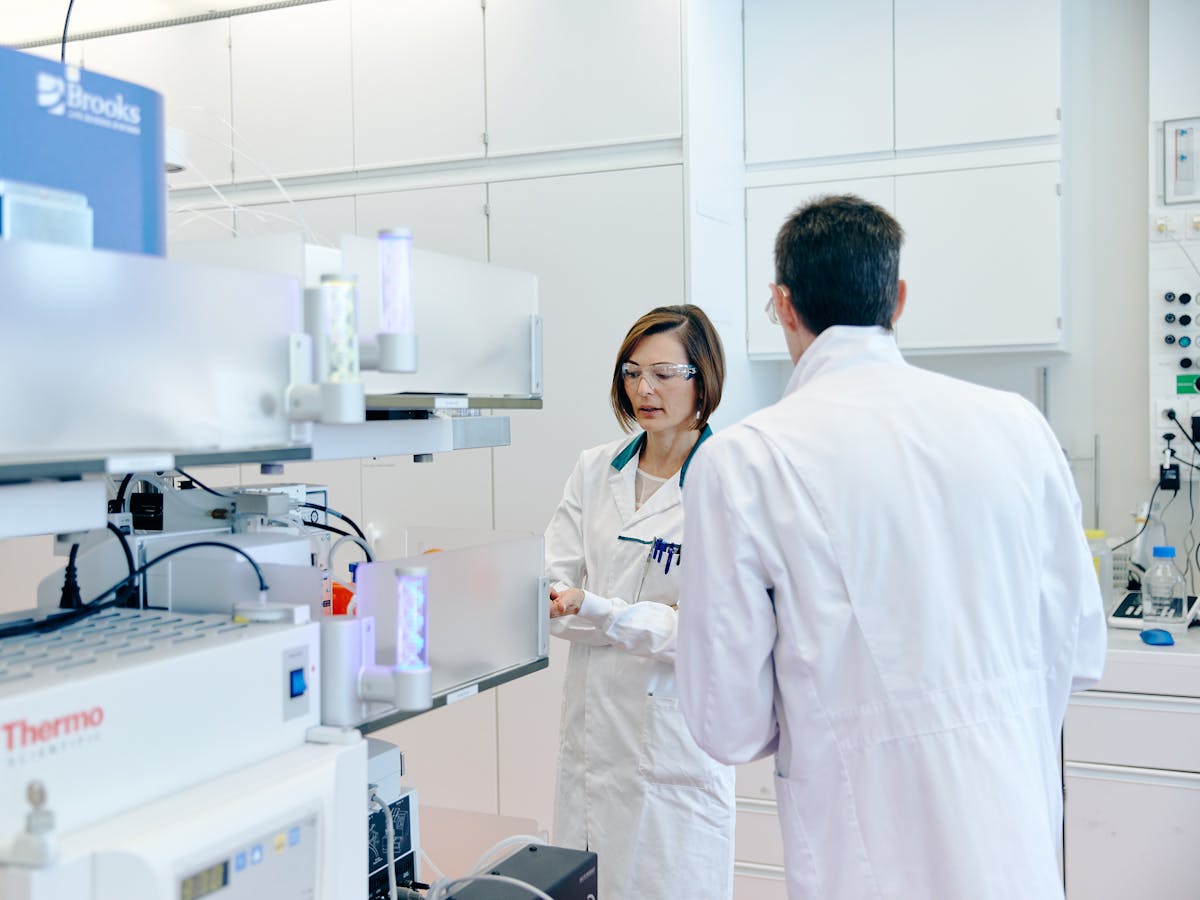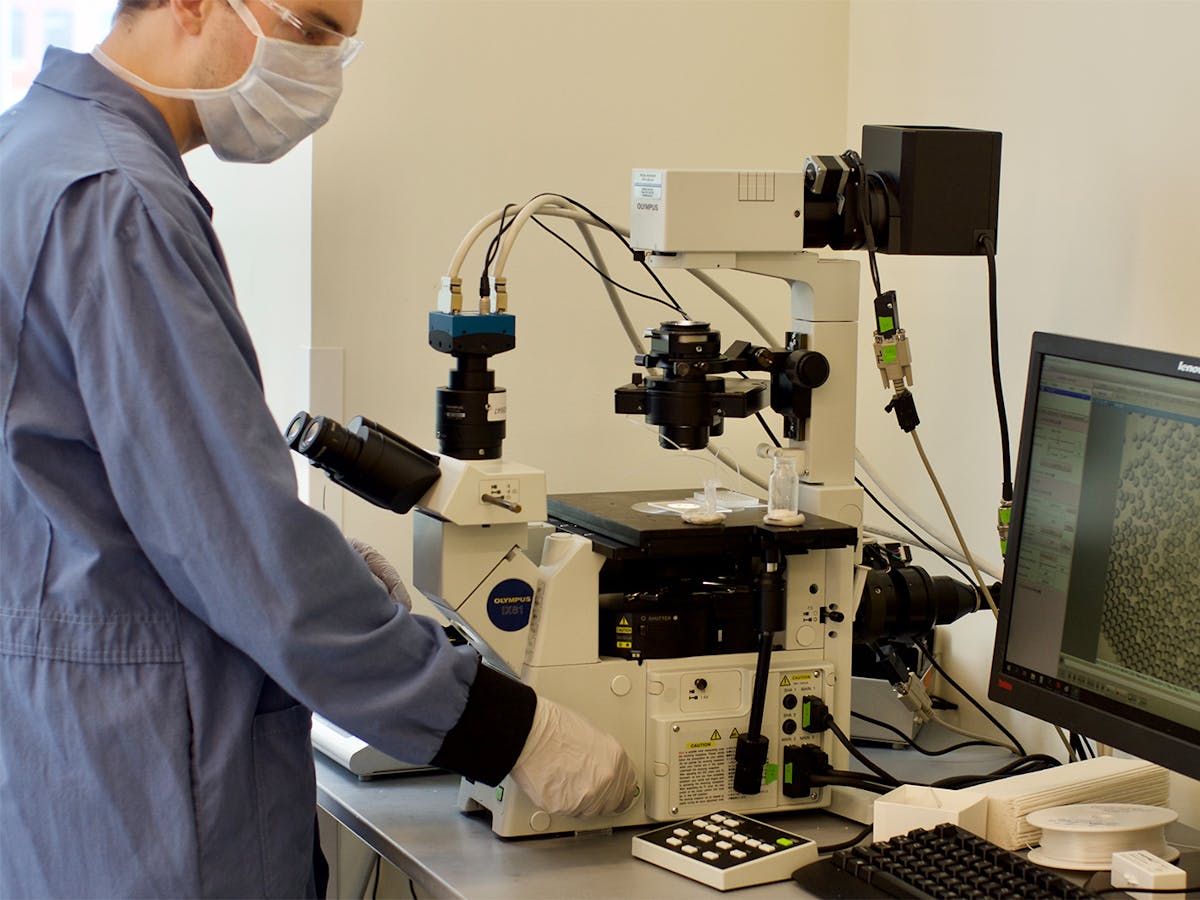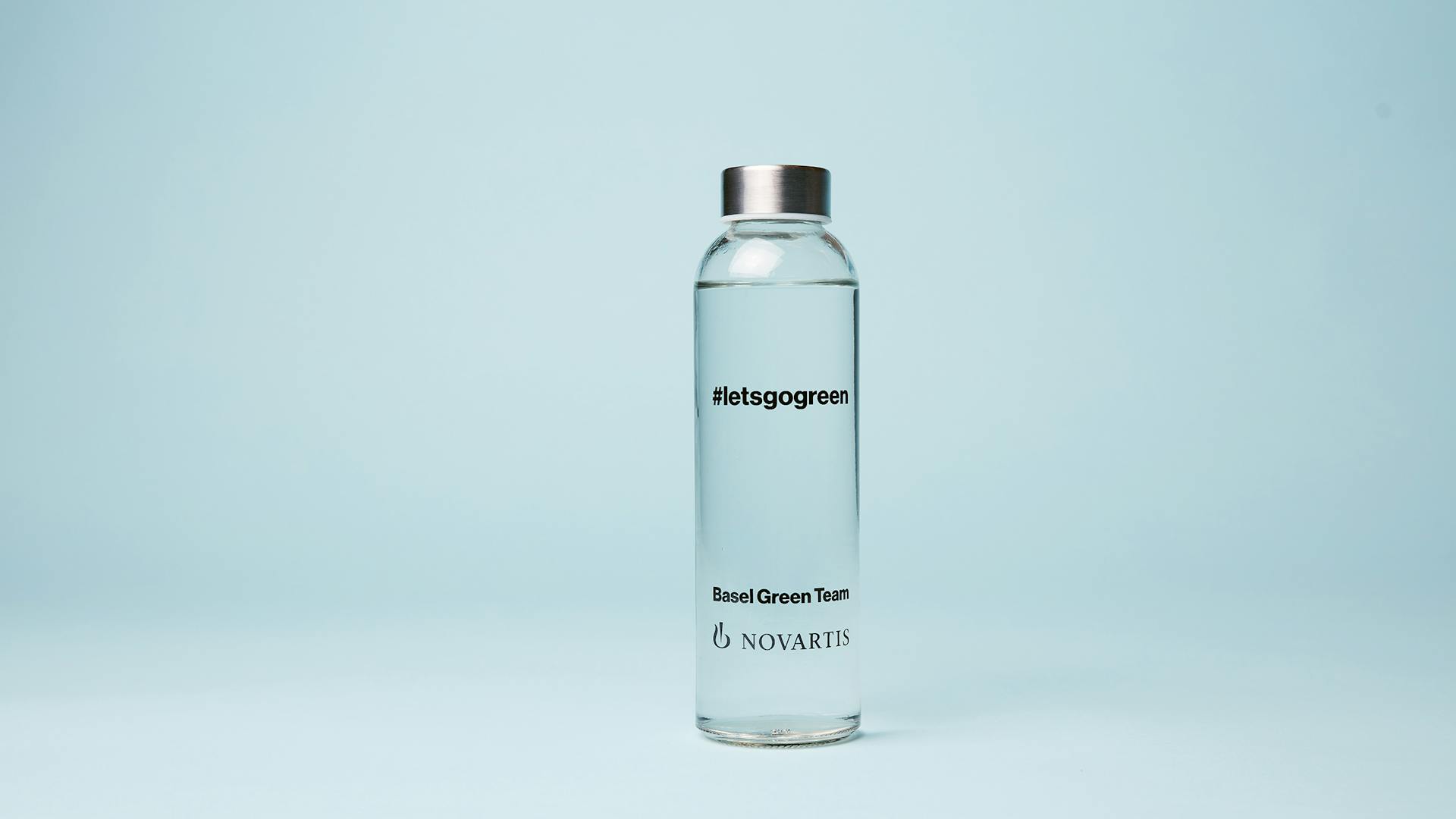
A traditional round bottom flask compared with...
 目次
目次 Shrinking the lab
Shrinking the lab All-in-one platform
All-in-one platform Mic-Drop – finding the needle in the haystack
Mic-Drop – finding the needle in the haystack Experiments in droplets
Experiments in droplets“In early drug discovery, typical chemistry workflows synthesize about 20 000 times more chemical material than researchers need for initial profiling,” says Jonathan Grob, a research investigator at the Novartis Institutes for BioMedical Research (NIBR). “That’s one example of where the scales of biology and chemistry can be better aligned – we also wanted to further accelerate drug discovery.”
The chemistry workflows used today date back to the 1950s – a time when investigational molecules were often directly tested in animals. In that setting, researchers needed grams of a drug candidate early in the process. But today, as a consequence of the molecular biology revolution of the 1980s and 1990s, researchers initially test new molecules in cells or in biochemical screens before moving to in vivo testing in animals. These tests need only nanograms of each drug candidate – but due to technical limitations, drug batch sizes have not shrunk accordingly.
Today’s standard drug discovery process starts with testing millions of compounds in plastic plates to find chemical starting points to engage the biological target, generating tons of plastic waste and hundreds of liters of hazardous liquids. The chemical starting points are then optimized in flasks and vials producing a surplus of drug compounds beyond what is required for initial biological testing.
Beyond the inefficiency of producing far more than is needed, making and testing new molecules takes weeks. New drug candidates must be synthesized, purified and assessed for their chemical and biological properties – and each step is completed in separate specialized labs. As a result, for each new idea, sometimes waiting times for teams can amount to weeks before they have compiled all the data and know whether they are on the right track. Because of the time and expense invested in each round of optimization, scientists are also limited in the number of hypotheses they can test.


















